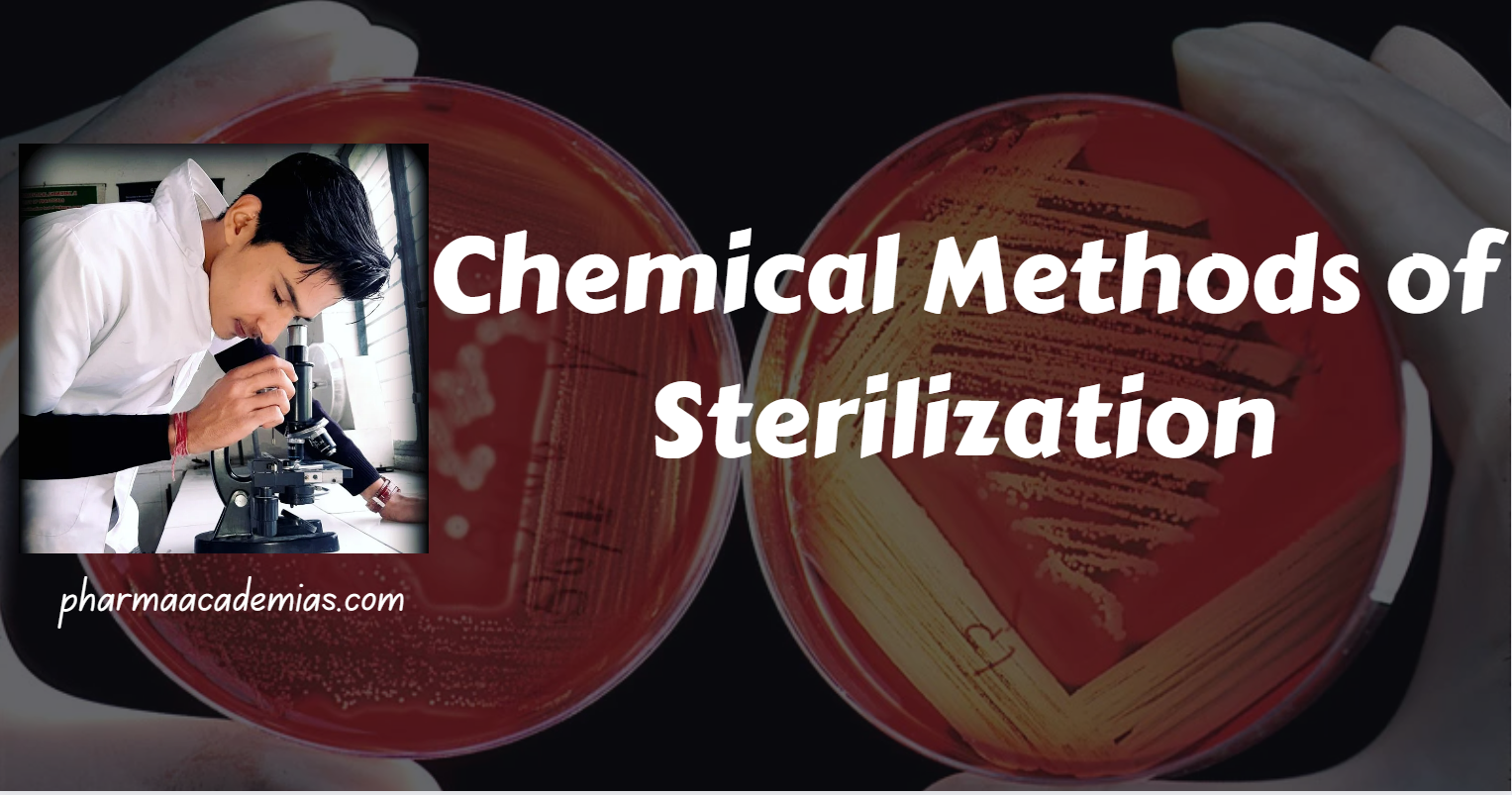Chemical sterilization methods involve antimicrobial agents or disinfectants to eliminate or reduce the microbial load on surfaces, instruments, or fluids. These methods are commonly used in healthcare, laboratories, and various industries. Understanding chemical sterilization’s principles, procedures, merits, and demerits is crucial for effective application.
1. Principles of Chemical Sterilization
Modes of Action:
Chemical sterilization agents work through various modes of action, including:
– Denaturation of Proteins: Disruption of protein structure and function.
– Disruption of Cell Membranes: Alteration of microbial cell membranes.
– Interference with Nucleic Acids: Inhibition of DNA/RNA synthesis or damage to genetic material.
2. Common Chemical Sterilants and Disinfectants
a. Ethylene Oxide:
Principle:
– Ethylene oxide is a gaseous sterilant that damages microbial DNA, RNA, and proteins.
Procedure:
– Ethylene oxide is applied in a sealed chamber to sterilize heat-sensitive items.
– The process involves a specific concentration, exposure time, and aeration period to remove residual gas.
Merits:
– Suitable for heat-sensitive materials.
– Penetrates and sterilizes complex devices.
Demerits:
– Carcinogenic and mutagenic properties.
– Requires specialized equipment and safety measures.
Applications:
– Used for sterilizing medical devices, pharmaceuticals, and certain spices.
b. Glutaraldehyde:
Principle:
– Glutaraldehyde is a liquid sterilant that acts by cross-linking proteins and disrupting cell membranes.
Procedure:
– Immersion of items in a glutaraldehyde solution for a specific duration.
Merits:
– Effective against a broad spectrum of microorganisms.
– Compatible with many materials.
Demerits:
– Pungent odor and irritant properties.
– Inactivation by organic matter.
Applications:
– Used for disinfection and sterilization of medical instruments, endoscopes, and laboratory equipment.
3. Sterilizing Gases
a. Hydrogen Peroxide Vapor:
Principle:
– Hydrogen peroxide vapor acts by producing free radicals that damage microbial proteins and DNA.
Procedure:
– Applied in a sealed room or chamber through vaporization.
Merits:
– Compatible with heat-sensitive materials.
– Leaves no toxic residues.
Demerits:
– Requires specialized equipment.
– May not penetrate materials deeply.
Applications:
– Used in isolators, clean rooms, and pharmaceutical manufacturing.
b. Peracetic Acid:
Principle:
– Peracetic acid is a liquid sterilant that disrupts cell membranes and oxidizes cellular components.
Procedure:
– Immersion or circulation of items in a peracetic acid solution.
Merits:
– Rapid action and biodegradable.
– Effective in the presence of organic matter.
Demerits:
– Corrosive and may cause skin irritation.
– Requires monitoring for stability.
Applications:
– Used in healthcare settings and the food industry for surface disinfection and equipment sterilization.
4. Merits and Demerits of Chemical Sterilization
Merits:
– Compatibility: Chemical sterilants are often compatible with various materials.
– Versatility: They can be used on various surfaces and items.
– Broad Spectrum: Effective against a broad spectrum of microorganisms.
Chemical sterilization methods are often more accessible and easier to implement than physical methods.
Demerits:
– Toxicity: Some chemical agents may have toxic properties.
– Residue: Residual chemicals may pose risks.
– Inactivation: Effectiveness may be reduced in the presence of organic matter.
– Material Compatibility: Not all materials are compatible with chemical sterilization.
Chemical sterilization methods are crucial in maintaining aseptic conditions in various fields. Understanding chemical sterilization’s principles, procedures, merits, and demerits is essential for choosing the most appropriate method for specific applications. Despite their advantages, careful consideration and adherence to safety protocols are necessary to ensure effective and safe sterilization practices.

